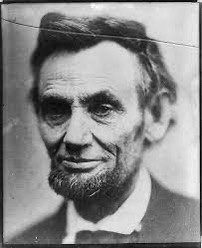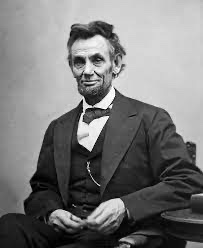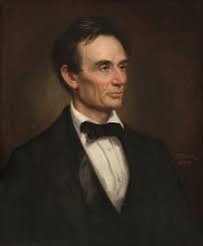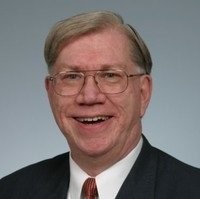(from Jim Blaine)
This one’s about leadership, but it’ll take you a little while to find that out. Leadership’s that way quite often. With leaders, last impressions are usually more accurate than first impressions; and appearances, unfortunately, can frequently be deceiving.
But if you survive this next little ride you’ll come away with a surefire, can’t miss, “spot the leader” identification methodology. A “new paradigm” for you MBA types.
How this all got started was a mid-week road trip to Kings Dominion with a small herd of high-decibel youngsters, mostly mine. For the in-cognoscenti , Kings Dominion is an amusement park one exit north of Richmond, Virginia. They would have built in Richmond, but the State Legislature already runs a three-ring circus at that exit.
The roller coasters were why we were headed to Kings Dominion. They’re the main attraction. Not to say there aren’t many others. One big draw, for example, is the “volunteers from the crowd” karaoke show, which the emcee promises “requires no talent to participate.” The absolute truth of that statement usually becomes pretty obvious rather quickly. Critics in the crowd overheard to remark, “Heck, I can sing that well” probably haven’t really thought through that observation carefully enough .

Another major entertainment is good old-fashioned “people watching.” There is always an extremely wide variety of exotic folks at an amusement park. And, usually there is an exotic variety of extremely wide folks, too. But much like risk-based lending, the rabble can be divided into two distinct groups – the have and the have-nots. In this case, that’s not a distinction based on wealth. The division is between those who have enough clothes on and those who have not. Well, the have-nots do, at least, seem to have the more complete tans. Don’t forget your sunglasses!

But my favorite thrill – other than the coasters – is the Scrambler. For those of you who haven’t been around much, so to speak, the Scrambler is 12 whirling cars on three separate pods that sling you toward, and spare you from, oblivion at ever increasing speeds. The Scrambler is the ultimate smile machine. The toughest hombre, the dourest Puritan, even the most jaded CPA can’t resist a broad grin when this mechanical marvel spins into action.
As the velocity rises, each rider’s “public mask” gradually weakens, then falls completely away. And for a few brief moments, you can gaze directly into the hidden child heart of another person’s soul. Souls are private places which, when uncovered, search frantically for shelter from the light. But with the Scrambler, only raw happiness – that which is best in each of us – is spun to the surface. And, it’s quite alright, and very reassuring, to enthusiastically stare. If you do take a look, don’t miss the revelation that we’re all very human and, at heart, very much akin – that’s something really worth learning before it’s too late and the ride is over.
Leadership and Roller Coasters
But, I came to tell you about leadership and that’s where the roller coasters come in. Kings Dominion has a bunch of them with names like The Rebel Yell, The Anaconda, The Hurler, The Grizzly, Shockwave and The Avalanche. You can ride these thrills forwards, backwards, over, under, inside, outside, up, down, sitting, standing, or my recommendation, kneeling and praying!
Riding a roller coaster evokes many of the same emotions as running a credit union, rolling out a new marketing campaign, or leading a DP conversion. “Shucks, it can’t be that bad…” “This is going to be fun…” “Whose idea was this?” “Well, at least it can’t get any worse…” “If I ever get out of this, I promise…” Guess you get the idea.
This time around, on one particular roller coaster ride there was an unfortunate accident. The to-and-fro and up-and-down was just too much for one young’un, who unswallowed his lunch while being closely held in the lap of his mother. When the ride ended, it wasn’t difficult to tell from Mom’s face (and clothes!) that this unexpected extra little thrill was just about “too much.” As opposed to the Scrambler, this is one of those soul-searching moments when it’s only polite to look away!

The roller coaster quickly emptied, of course, and the waiting throng watched and waited for the “now what” with much anticipation. The rides are operated by teams of young people. I’m sure they are summer help, awaiting the advent of the fall semester at local universities and colleges. It’s apparent that they’ve been chosen with great care, because all are neat, attractive people in their blue knit and pressed tan khaki.
The Leader’s Test
Surprisingly, on this occasion, all the “service team” seemed to have missed “the mess” and to be thoroughly occupied with other duties; though it was difficult to determine exactly what those “other duties” involved. The team members were all desperately looking anywhere other than toward the “scene of the crime.” As time passed and the tension mounted, the feigned ignorance developed into a serious game of chicken. Who would blink first?

There are certain problems and situations in life that only a leader will handle. Such problems and situations are of a type which should not be avoided and cannot be ignored; and, of a type which only the uncivilized or unjust would try to delegate to others. These are the type of problems that we all can see “somebody needs to do something about that.” Most of us aren’t willing to be that “somebody.”
Next time you have “a little mess” at your credit union, watch for who steps forward to clean it up. Always promote the first person “to grab the mop.” They really are somebody.
And, if your hand is not the first one on the mop, perhaps you should give that a little thought, too….
(March 14, 2011)






